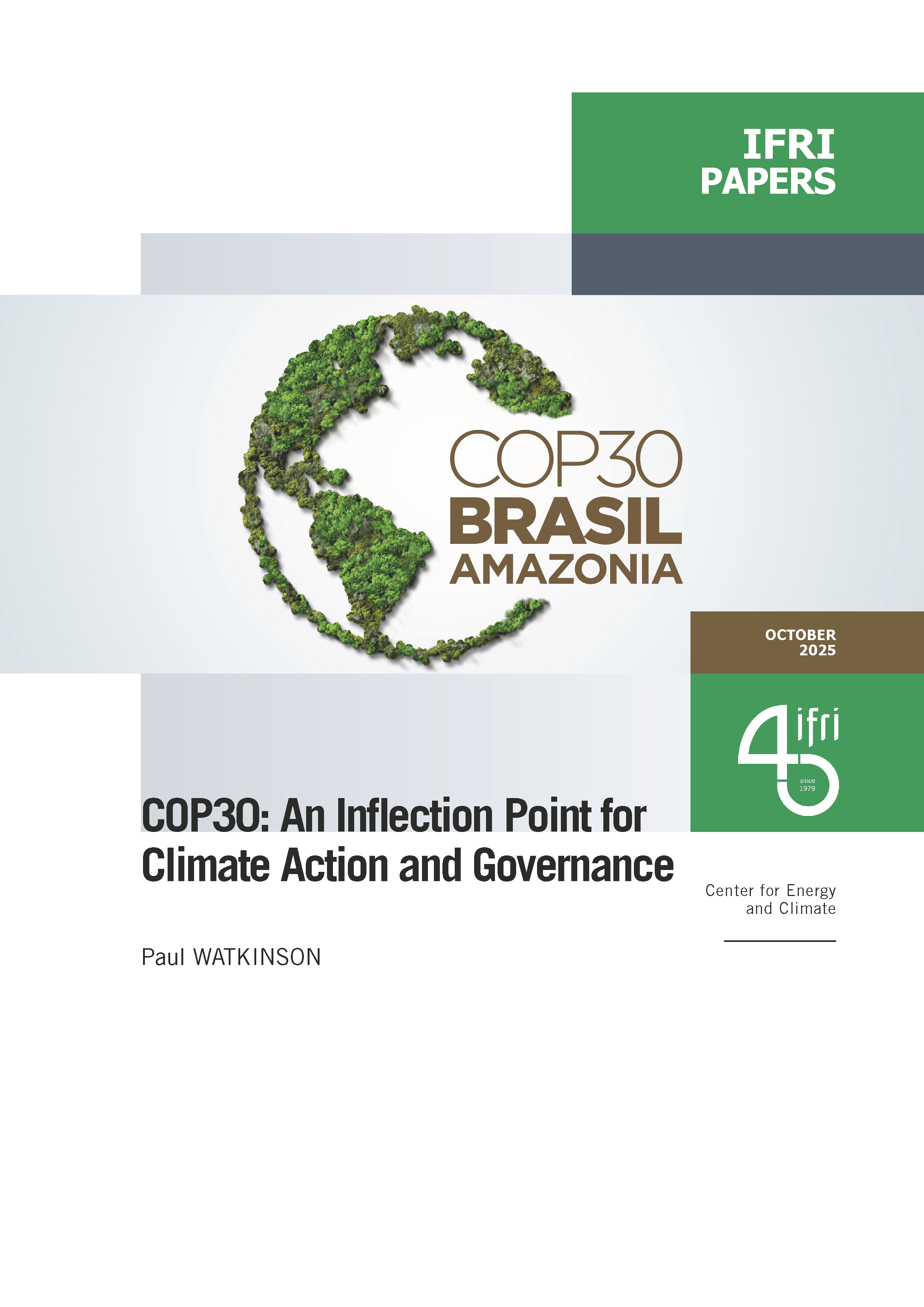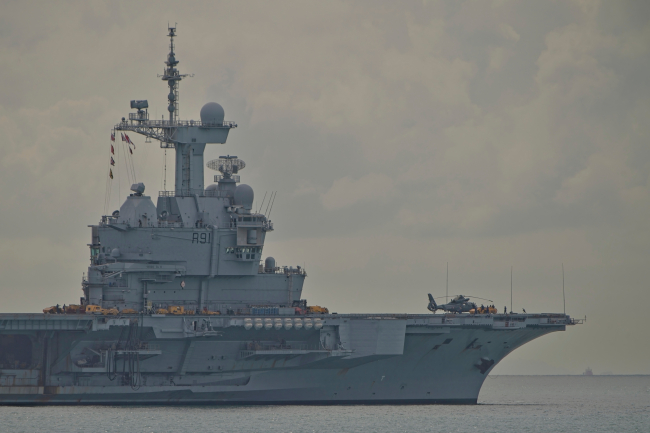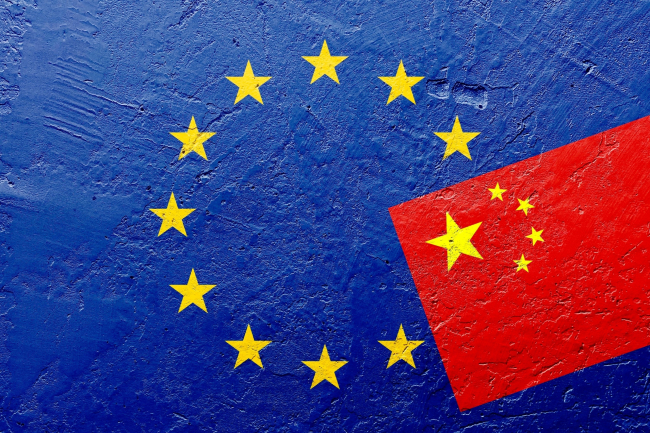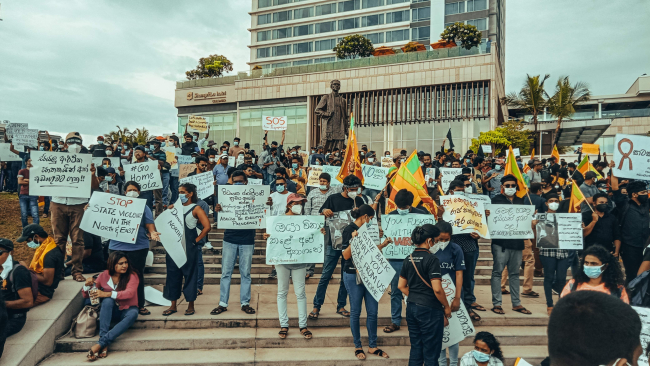The Ambitions of the Islamic Republic of Iran in the Pacific

In January 2023, the Iranian Navy staged a show of force near the Australian Exclusive Economic Zone (EEZ) amid growing tensions between Tehran and Canberra.
The ships involved were the IRIS Makran and the frigate IRIS Dena, both of which belong to the 86th flotilla of the Iranian Navy. These vessels had made a stopover in Indonesia in November 2022 after leaving Iran in September of the same year. In December, the two ships were spotted in French Polynesia, en route to the southern Marquesas Islands.[1] This naval operation to Australia coincided with Canberra's support for the Iranian national uprising that began in September 2022. On December 10, Canberra imposed “Magnitsky” sanctions[2] targeting the Iranian authorities responsible for the crackdown on protesters and the delivery of Iranian drones to Russia.
The Iranian naval presence in the Indo-Pacific (a terminology not used by the regime) aims to reaffirm Tehran's eastern strategy[3] and challenge perceived US “hegemonic” influence by seeking “multipolar” partnerships on the international stage.[4] Since the mid-2000s, the Islamic Republic has been pursuing a multidimensional foreign policy that includes Africa and Latin America, among other regions. In Asia, Iran aims to strengthen its ties with non-Western powers such as Russia and China, both of which are permanent members of the United Nations Security Council. The “Look to the East” policy[5] became a cornerstone of Iranian foreign policy during the Ahmadinejad presidency (2005-2013) and was defined when China became Iran's top trading partner, surpassing the European Union.
Historical Background: Iran’s Regional Ambitions, from the Indian Ocean to the Pacific
As early as 1974, during a state visit to Australia, the Shah of Iran, Mohammad-Reza Pahlavi, proposed the creation of a “common market of countries bordering the Indian Ocean”,[6] including Iran, Pakistan, India, Ceylon, Bangladesh, Burma, Malaysia, Thailand, Singapore, Indonesia, Australia, and all East African countries. The ultimate goal was to ensure their “collective security” within an area from which US and Soviet influence would be excluded. However, India rejected the project due to concerns about Australia's preponderance in such an organization. The Shah reiterated his proposal during a visit to New Delhi in 1978, but this time, Pakistan refused the proposal due to differences in the nature of the countries selected by the imperial regime to form this new regional organization.
During the imperial era, the navy of the Iranian monarchy was a source of pride for the Shah and a means of asserting regional ambitions, particularly after the end of the 1960s. Imperial naval forces were at the center of Iranian military operations, such as the capture of three disputed islands in the Persian Gulf in 1971,[7] or the war in Oman from 1973-1976.[8]
After the 1979 Revolution, the desire to be present on a global scale was primarily explained by the ideological ambition of the new regime to promote its revolutionary model not only at the regional level but also internationally. Muslim countries became a priority, with particular attention given to Malaysia and Indonesia. The authorities of the Islamic Republic designed a naval policy based on building modest naval capabilities alongside maximalist ambitions in the international maritime arena.[9]
Since 1979, Iranian maritime strategy has been in line with the country’s military doctrine, which emphasizes an asymmetric response to the military challenge posed by the US military presence in Iran’s neighborhood. The objectives are also national prestige and ideology. In other words, Tehran wishes to defy US influence in areas perceived as being priorities for American interests, such as Latin America and the South Pacific.
Supreme Leader Ali Khamenei, commander-in-chief of Iran’s military forces, has set a goal for the Navy of the Islamic Republic to be present in the Atlantic, Indian, and Pacific oceans. This strategy is based on a maritime presence of Iranian naval forces in strategic straits such as Hormuz or the Panama Canal. The two Iranian ships previously mentioned were en route to the Panama Canal in February 2023.[10] Command centers have also been set up by the Iranian Navy for the Indian, Atlantic, and Pacific oceans.
Sino-Iranian Rapprochement
Military cooperation with Western countries was disrupted by the Islamic Revolution of 1979. Since then, China and post-Soviet Russia have been Iran's primary military partners.
Beijing and Tehran conducted their first joint naval exercise in September 2014, followed by a second in June 2017 and a third with Russia in the Indian Ocean and the Arabian Sea in December 2019.[11] A similar, new trilateral exercise was held at the end of January 2022. As China pursues global maritime ambitions, and given the frequency of joint Sino-Iranian military exercises over the past eight years, Beijing could, according to some sources,[12] consider establishing a naval base on the Iranian shores of the Persian Gulf.[13]
For China, Sino-Iranian naval diplomacy sends a clear message to the Biden administration: by cooperating with a rival state of the United States, Beijing gives itself room for maneuver in its relations with Washington. In other words, Chinese authorities can play the Iranian card to obtain US concessions by monetizing their cooperation with Tehran. Despite the asymmetrical nature of the Sino-Iranian relationship, joint military exercises are also in the interest of Tehran, which sees favorably a deterioration of Sino-American relations, which in turn reinforces Beijing's desire to work with the Islamic Republic. By developing its military relations with China, the Islamic Republic is thus working to form an axis ‘independent’ of ‘US hegemony’ according to the terminology used by the Iranian political elites.
Show of Strength, Naval Diplomacy and Communication Strategy
The Iranian maritime presence in the South Pacific is a tool for promoting the Iranian regime on the international scene. This allows Iranian military forces to develop naval diplomacy not only with Russia and China but also with other states such as Indonesia.[14] This naval diplomacy makes it possible to support Iran’s objective to join the BRICS and to put in place a strategy to circumvent Western sanctions. Similarly, in January 2023, the announcement of the expansion of operations by the Islamic Republic’s naval forces in the Panama Canal comes against a backdrop of heightened bilateral tensions between Tehran and Washington.
The Iranian maritime presence in the South Pacific is also a way for Tehran to reaffirm its ambition to see the emergence of a post-Western international order[15] and to demonstrate the ineffectiveness of Western sanctions in limiting its military progress. The official narrative insists on the excellence of Iran’s naval capabilities. The aim is to reinforce the official discourse on the Islamic Revolution’s successes in terms of military self-sufficiency (khod-kafai) and through a global presence of naval forces.
The Iranian military authorities explain that the projection of their navy far from their borders is a response to the presence of Western armed forces in the immediate regional environment of Iran. This rhetoric should not, however, hide a growing gap between excessive military ambitions and capabilities that remain very limited. The deployments of the naval forces of the Islamic Republic are ultimately more of a symbolic move rather than a real military capacity to fight at sea so far from its national borders.
[1]. A.Feertchak, “Un Falcon de la Marine nationale survole deux navires militaires iraniens au large de la Polynésie”, Le Figaro, December 25, 2022, available at : www.lefigaro.fr.
[2]. A. Maguire, “Australia announces ‘Magnitsky’ sanctions against targets in Russia and Iran. What are they and will they work?”, The Conversation, December 11, 2022, available at: www.theconversation.com.
[3]. H. Fan, “China–Iran Relations from the Perspective of Tehran’s Look East Approach”, Asian Affairs, 2022, 53:1, 51-67, DOI: 10.1080/03068374.2022.2029053.
[4]. T. Kellner, C. Therme, “Les ententes multipolaires de l'Iran. Aspects russe et asiatiques de la politique étrangère de Téhéran”, Politique étrangère, vol. 72, No 4, 2007, pp. 875-887.
[5]. M.-R. Djalili et T. Kellner, “Iran : regard vers l'Est : la politique asiatique de la République islamique”, Bruxelles, GRIP, 2005, available at: www.grip.org.
[6]. M.-R. Pahlavi, Réponse à l’Histoire, Paris: Albin Michel, 1981, p. 195.
[7]. J. Salmon, “Le conflit de souveraineté sur Abou-Moussa et les Petite et Grande Tomb”, Le Monde diplomatique, November 1980, available at: www.monde-diplomatique.fr.
[8]. M. Pellas, “Oman. Comment le chah d’Iran a sauvé le régime”, Orient XXI, March 5, 2020, available at: www.orientxxi.info.
[9]. F. Nadimi, “New Iranian Warship Signals Longer Maritime Reach, More Aggressive Strategy”, Brief Analysis, The Washington Institute for Near East Policy, September 16, 2022, available at: www.washingtoninstitute.org.
[10]. F. Montaruli, “In “Warning Sign” For US, Iranian Warships Are Reportedly Sailing Toward Panama Canal”, Iran Wire, February 8, 2023, available at: www.iranwire.com.
[11]. “Iran, Russia, China Hold Joint Naval Drill Amid Growing Ties”, RFE/RL, January 21, 2022, available at: www.rferl.org.
[12]. “Iran Seeks to Expand Its Military Cooperation with China”, Associated Press, April 27, 2022, available at: www.voanews.com.
[13]. A. Rafat, “ANALYSIS: Iran and China’s Controversial 25-Year Deal”, Kayhan Life, April 9, 2021, available at: www.kayhanlife.com.
[14]. P. Dupont, “Why Was the Iranian Navy in Jakarta?”, The Diplomat, November 18, 2022, available at: www.thediplomat.com.
[15]. D.Saraswat, “Why Tehran Is Talking About A Post-West World Order”, Lobelog, February 26, 2019, available at: www.lobelog.com.
Download the full analysis
This page contains only a summary of our work. If you would like to have access to all the information from our research on the subject, you can download the full version in PDF format.
The Ambitions of the Islamic Republic of Iran in the Pacific
Related centers and programs
Discover our other research centers and programsFind out more
Discover all our analyses
Opening up the G7 to South Korea to Address Contemporary Global Challenges
The G7’s global influence has diminished as powers like China reshape international governance through initiatives such as BRICS and the Shanghai Cooperation Organisation (SCO). With the G7 now representing just 10 per cent of the world’s population and 28 per cent of global GDP, its relevance is increasingly questioned.
Expanding SPDMM as a pivotal institution in the Pacific – A French perspective
The South Pacific Defence Ministers’ Meeting (SPDMM) is the only forum that brings together defense ministers from the wider South Pacific — including Chile, which is hosting it for the first time. This heterogeneous group of countries with varying resources, capacities, and interests — Australia, Chile, Fiji, France, New Zealand, Papua New Guinea (PNG), and Tonga — are united by their shared determination to strengthen cooperation on maritime security and humanitarian assistance and disaster relief (HADR) activities.
EU’s Derisking From China: A Daunting Task
With economic security as a major concern, the EU has recently turned to “derisking” from China. The EU strategy entails reducing critical dependencies and vulnerabilities, including in EU supply chains, and diversifying where necessary, while recognizing the importance and need to maintain open channels of communication.
Sri Lanka’s NPP Government. From System Change to Structural Compliance
In September 2024, a relative outsider to Sri Lanka’s two-party-dominated political system, Anura Kumara Dissanayake, won the presidential elections. The anti-establishment, populist movement he represented, the National People’s Power (NPP), went on to receive an overwhelming mandate in the November 2024 general elections, winning 159 seats in a 225-member parliament.












